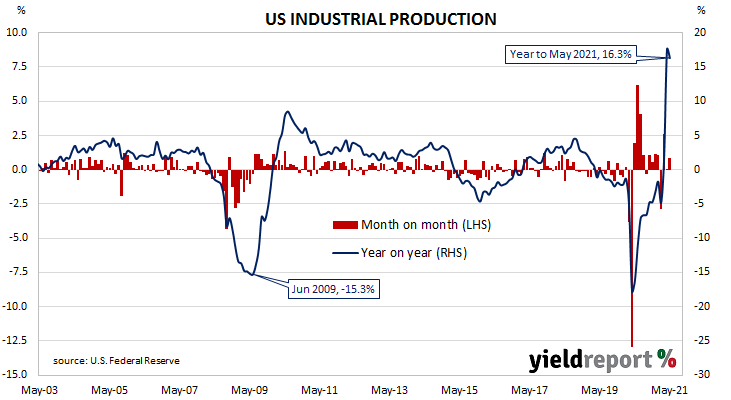Summary: US output expands in May; rise more than expected; April figure revised down considerably; US manufacturing “past peak growth” but “remains very strong”; capacity utilisation rate rises, highest since February 2020.
The Federal Reserve’s industrial production (IP) index measures real output from manufacturing, mining, electricity and gas company facilities located in the United States. These sectors are thought to be sensitive to consumer demand and so some leading indicators of GDP use industrial production figures as a component. US production collapsed through March and April of 2020 and then began recovering in subsequent months.
According to the Federal Reserve, US industrial production grew by 0.8% on a seasonally adjusted basis in May. The result was more than the 0.6% increase which had been generally expected and substantially more than April’s 0.1% expansion after it was revised down considerably from 0.7%. On an annual basis, the expansion rate slowed from April’s figure of +17.6% to +16.3%.

The report was released on the same day as May’s retail sales and producer price index (PPI) numbers but US Treasury bond yields hardly moved on the day as markets awaited this week’s FOMC meeting. By the end of the day, 2-year and 10-year Treasury yields remained unchanged at 0.16% and 1.50% respectively while the 30-year yield finished 1bp higher at 2.19%.
NAB senior economist Tapas Strickland said the figures, in conjunction with other recent reports, indicated US manufacturing “is moving past peak growth, even if activity remains very strong in an absolute sense.” He also noted it had recovered to pre-COVID levels.

